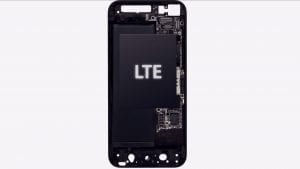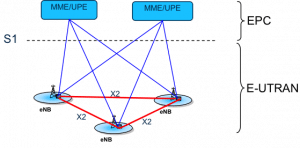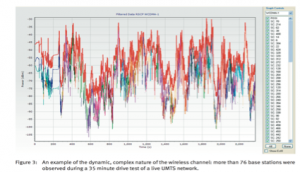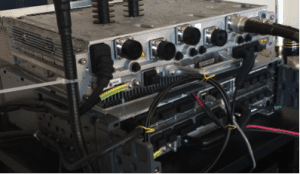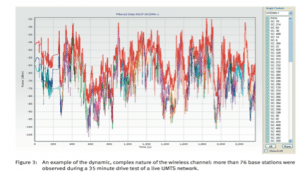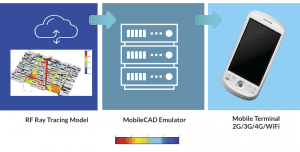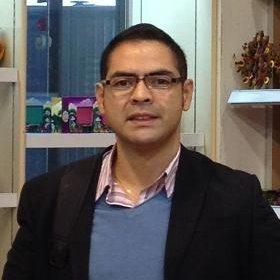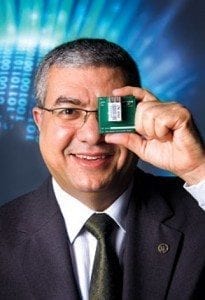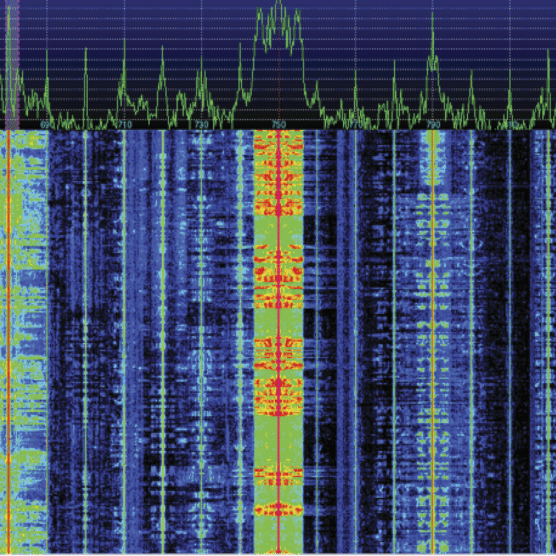

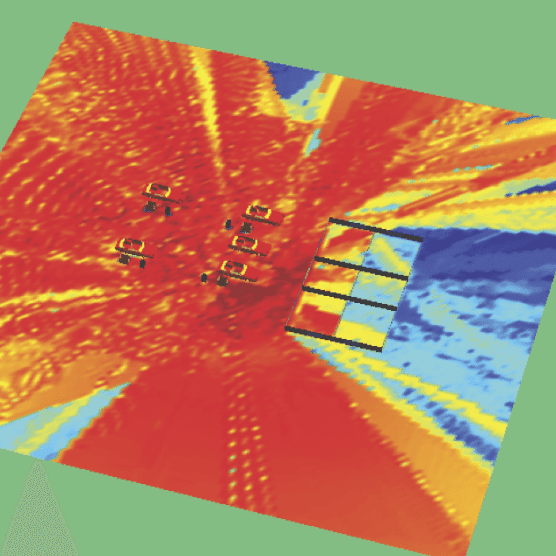

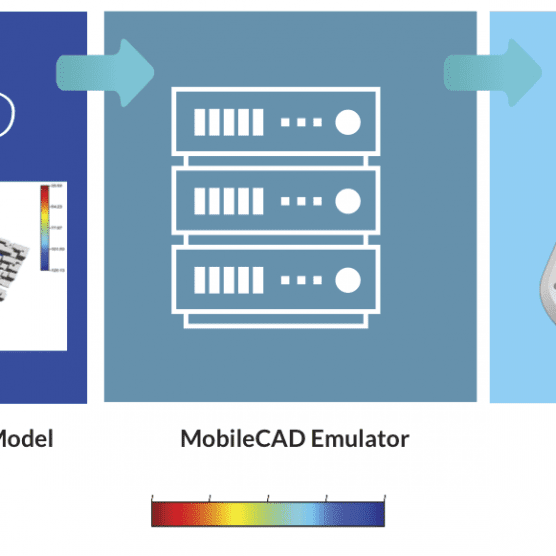
MobileCAD Wireless Emulation
MOBILECAD Wireless Emulation
Patent Licensing
For patent licensing please contact MOBILITY WORKX, LLC. We offer specifications, reference implementations, software consulting, testing, and hardware integration. EGLA has a license to the patent(s).
Wireless Emulation Technology
MobileCAD is a platform designed to emulate mobility condition in 2G/3G/4G wireless communication systems
“MobileCAD is the true Mobile and Wireless Emulation Device”
Mobile devices require extensive testing as firmware increases in size, stack interactions include sophisticated handover techniques and RF fading conditions. Mobile phone traveling at different speeds and through different trajectories suffers of signal strength variations, changes on network delays, handover, and fading. Mobile and Wireless Emulation is a must have in today’s wireless industry for both carriers and phone manufacturers.
Device manufactures need to ensure all interacting parts of a mobile device, including the EPC (Evolved Packet Core) infrastructure and the device itself at all operating systems levels, from the RF antenna to mobility protocols (e.g. Mobile IP), thousands of applications, mobile streaming and many others
Mobile devices include multiple stacks and are defined by ETSI as follows: In this diagram, the control and user plane stacks compose the UE (Unser Equipment) or the mobile phone or test device client. Likewise, the infrastructure provides S-GW (Serving Gateway), MME (Mobility Management Entity), Home Agents and many other components defined in the EPC specification and architectures used by mobile carriers around the world and specified by ETSI.
ETSI also includes ETSI 36 158 and ETI 136 521-1, 136 521-2 and ETSI TS 136 521-3 where fading and conformance testing are clearly stipulated for testing on LTE and UMTS handover and conformance from roaming from EUTRAN to UTRAN or a standard BTS.
Wireless Network Emulation is a need for mobile phone and development with MIMO and other RF interfaces.
In order to test this complex functionality, mobile phone manufacturers and designers are required to run “Drive Tests” or “Drive Test Simulations” which are difficult to conduct manually, hence MoibleCAD provides a reproducible, predictable and controlled environment to test this devices.
Received Signal Strength Map
Presentations on Wireless Emulation
Download additional presentation:
Major Features
- Great tool to implement ETSI/3GPP TS 136 508 and TS 136.251-1, TS 136.251-2, and TS 136-251-3
- Playback for Drive Testing Survey data to a mobile terminal
- Mobile IP Support, packet data testing – suitable for 3G/4G Networks
- Attenuation, BER, Fading, emulation
- Software-defined Radio Specification
Major Benefits
- Patented protection for many software and RF testing in wireless networks
- Repeatability of all mobile testing conditions
- Multiple emulation of devices
- No need for expensive manual drive testing
- Design your prototypes from PCB to Release using same RF/Mobile conditions.
Wireless Emulation Patent
The US Patent 7,231,330 invented by Dr. Edwin Hernandez and Dr. Sumi Helal is licensed by two major mobile software and phone manufacturer in the United States in non-exclusive basis. For details the patent is attached here: US7231330
Technology for Wireless Emulation
We achieve network emulation using Network Function Virtualization (NFV) Elements. The current software specification uses Network Function Virtualization (NFV) and 4G/LTE systems that include the following components:
Wireless Network Node and RF Environment
Wireless Network Node “WNN” is an implementation using SDR (Software Defined Radio) items capable of managing physical access to up to 64 3G users per cell and meeting the following specifications:
- RF: 400MHz to 4.0GHz
- 2x 1Gb board
- Simulation of RF Rayleigh Fading, Drive Test support
- Supports 2G/3G/4G standards (GSM, UMTS, LTE)
- 1 SISO or 2x2MIMO
- Base station capable of broadcasting at 20 Km range
- For laboratory and testing purposes range will be adjusted to the operating parameters of conformance testing
- Gb Ethernet Interface for infrastructure management.
- Customizable software tools adaptable for future use
Provides a simulation environment to enable, RF Rayleigh Fading, drive test replay and several other parameters such as noise and BER.
The WNN creates realistic yet repeatable emulation of RF channel conditions for testing modern wireless receivers. The emulator replicates real-world fading, spatial channel conditions, MIMO and SISO channels, Additive White Gaussian Noise (AWGN) and much more, making it possible to isolate performance issues early in the development and design verification cycle.
Block Diagram
The following block diagram depicts the controlling ports and RF connectivity provided by the Wireless Network Node. The Wireless Network Node uses Fiber and/or GbE (Gigabit Ethernet) connectivity to receive the controlled environment parameter as well as any additional signaling required for the emulation to be performed according to the terrain under simulation.
Features for Wireless Network Node
GSM
- GSM/GPRS/EDGE modems
- Support of all GSM bands: 450MHz, 850 MHz, 900 MHz, 1800 MHz, 1900 MHz
- Support of 7 to 41 UEs per DSP (multi-TRX)
- Cell size of up to 35 km
- Full rate, AMR Full rate and Half rate voice codecs
- CS-1 to CS-4 and MCS-1 to MCS-9 data channels
- Measurement reporting
CDMA2000
- Compatible with CDMA2000 1xRTT
- Support of bands 850 MHz, 1900 MHz, 450 MHz
- Support up to 32 UEs
- Cell size of up to 27 km
- Radio configuration RC1, RC2 and RC3
UMTS
- Compatible with 3GPP Release
- Support of all UMTS bands
- Support up to 32 UEs per DSP
- Circuit Switched (CS) Voice
- HSDPA/HSUPA throughput of 14 Mbps downlink, 5 Mbps uplink
- Multi Radio Access Bearer (MRAB)
- Cell size of up to 20 km
- Crest Factor Reduction
- Integrated MAC-e and MAC-hs schedulers
LTE
- Compatible with 3GPP Release 8 LTE-FDD/TDD eNodeB
- Support for all LTE bands
- Support for 1.4, 3, 5,10, 15, and 20 MHz bandwidths
- Throughput of 30 Mbps downlink, 15 Mbps uplink
- Cell size of up to 20+ km
- 2×2 MIMO
- Crest Factor Reduction
Wireless Communication Characteristics
Among the wireless characteristics that can be emulated such as time-varying multi-path delay spread, fast fading, shadow fading and channel loss for advanced receiver implementations using diversity, beam forming and MIMO
Our Fading Lab lets you create a repeatable RF environment from data sets, whether captured on channel-sounding equipment or generated in software
An advanced fading engine ensures accurate testing of sophisticated technologies like E-UTRA (LTE), HSPA, HSPA+, EV-DO, WLAN and WiMAX
Wireless Network Node and RF Environment
Wireless Network Node “WNN” is an implementation using SDR (Software Defined Radio) items capable of managing physical access to up to 64 3G users per cell and meeting the following specifications:
- RF: 400MHz to 4.0GHz
- 2x 1Gb board
- Simulation of RF Rayleigh Fading, Drive Test support
- Supports 2G/3G/4G standards (GSM, UMTS, LTE)
- 1 SISO or 2x2MIMO
- Base station capable of broadcasting at 20 Km range
- For laboratory and testing purposes range will be adjusted to the operating parameters of conformance testing
- Gb Ethernet Interface for infrastructure management.
- Customizable software tools adaptable for future use
Provides a simulation environment to enable, RF Rayleigh Fading, drive test replay and several other parameters such as noise and BER.
The WNN creates realistic yet repeatable emulation of RF channel conditions for testing modern wireless receivers. The emulator replicates real-world fading, spatial channel conditions, MIMO and SISO channels, Additive White Gaussian Noise (AWGN) and much more, making it possible to isolate performance issues early in the development and design verification cycle.
For additional details contact us at {561)869-4446 or email at edwinhm@eglacorp.com
Patent Licensing Options
For licensing options please come to Mobility Works, LLC

